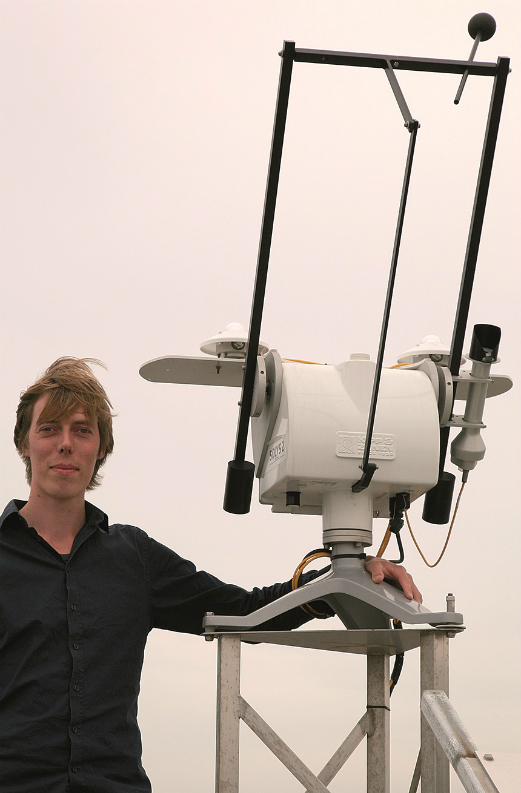I’ve been working for ECN since the beginning of 2014, after finishing my Bachelor thesis here. I’m a technical analyst doing various kinds of jobs, including measurements and managing the outside ‘laboratory’, with all the uncontrollable consequences of an outdoors environment. This measurement roof was renewed at the beginning of 2014 as ECN needed more space for real-life performance tests of solar panels and the flat roof of our office building was an ideal location, with almost no shading.
The measurement setup was designed and installed with several Kipp & Zonen instruments because of the required specifications and quality standard compliance. The decision for the type of instruments was taken easily because of our experience with outdoor measurements. A sun tracker with a shading assembly is equipped with a pyrheliometer, and 2 pyranometers to provide direct, global and diffuse solar radiation measurements (DNI, GHI and DHI). There is an additional pyranometer for plane of array (POA) radiation and for comparison with silicon reference cells. There is also a weather station on the roof.
 PV panels under test on the roof at EC
PV panels under test on the roof at EC
An example of what we do is creating and building new solar panels with various internal technologies. On the outside you may or may not see any difference, but from the inside (with x-rays) and in the energy yield of the modules you’ll see it.
The process of designing starts in software, where the panel is modelled and simulated with many assumptions. Then the development process starts, with a small prototype of the panel, followed by a scaled-up version and, finally, a full size module. Thorough testing is carried out between each step and in outdoor conditions, similar to the integration test of a fully engineered product. The analysed data from the newly developed panel or module is compared to the solar radiation measurements from the Kipp & Zonen instruments to estimate the real-world performance and yield, which closes the development cycle.
ECN often performs real-world measurements on solar panels developed in collaboration with industrial partners. The performance of the panels is important to them and helps them to market their products. With the stored measurement data you can go back in time to verify what may be the cause of, for example, a remarkable value from your device under test conditions. This is what we happily use because scientists will always try to find new trends and patterns in the data. Find out more at www.ecn.nl and www.twitter.com/ecn
 Plane of Array pyranometer and reference cells
Plane of Array pyranometer and reference cells
 Koen de Groot with the SOLYS2 sun tracker
Koen de Groot with the SOLYS2 sun tracker
Article by Koen de Groot, ECN Solar Energy.